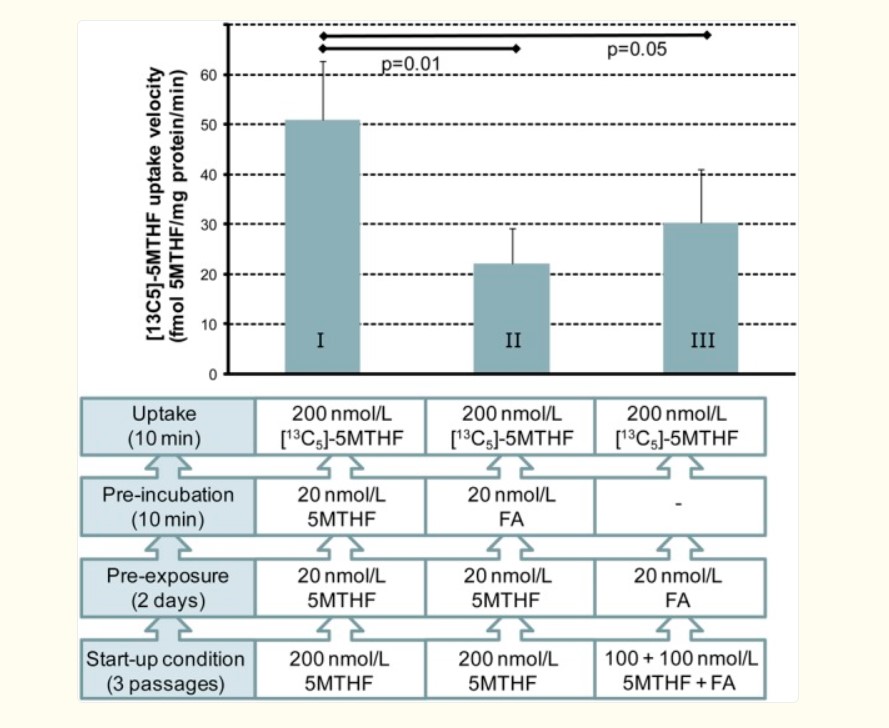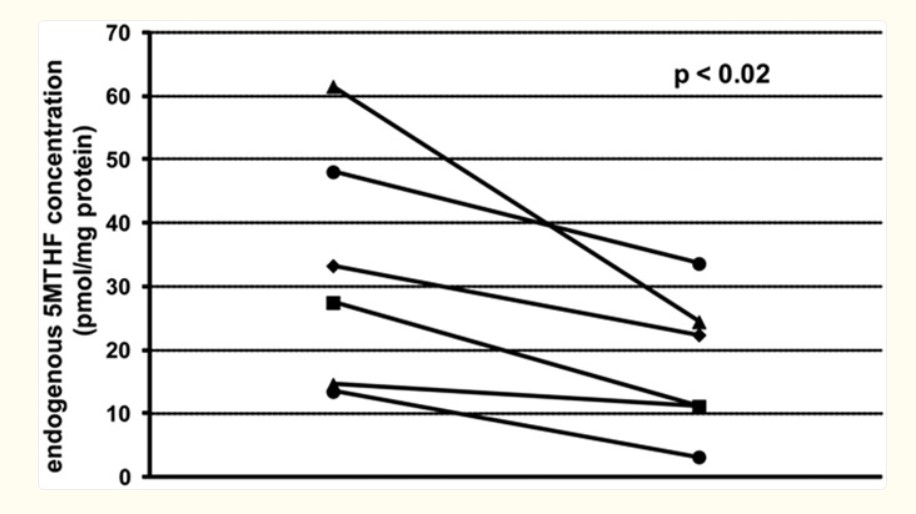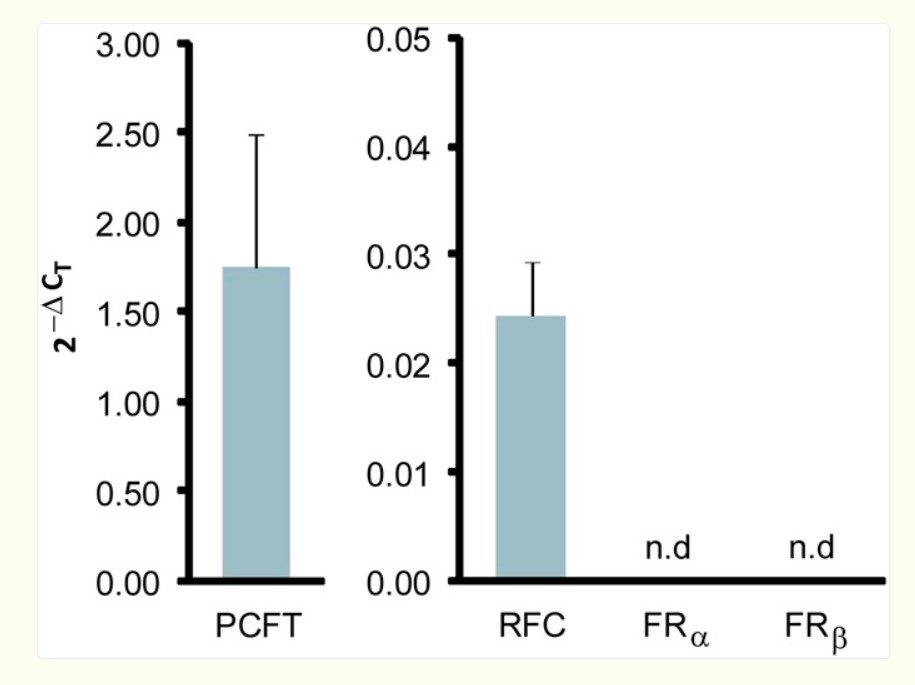During the preconception and pregnancy periods, folic acid supplements are almost a "standard" in every household. From doctors' recommendations to relatives' and friends' experience sharing, everyone regards folic acid as the "guardian" of fetal neural development. However, a study published in the October 2017 issue of J Cardiovasc Pharmacol is like a sledgehammer that has cracked our understanding of folic acid—folic acid, or rather, synthetic folic acid, may not be the "all - round player" we imagined.

Let's travel back to October 2017 in the laboratory of VU University Medical Center in Amsterdam, the Netherlands, where the team led by Desiree Smith was focusing on the study of the relationship between folic acid and 6S-5-methyltetrahydrofolate (5-MTHF) in terms of cellular uptake.

6S-5-methyltetrahydrofolate (5-MTHF) is the primary active form of folate in human blood and is directly involved in key physiological processes such as homocysteine metabolism and the maintenance of vascular endothelial cell health. Folic acid (FA), on the other hand, is a synthetic oxidized folate widely used in food fortification and supplements. After entering the human body, it needs to undergo complex metabolic transformations to become 5-MTHF.
In the initial stage of the experiment, the researchers cultured human umbilical vein endothelial cells (HUVECs) in a culture medium containing 200 nM of 5-MTHF. Then, to simulate the short - term scenario of a large intake of folic acid, they added 20 nM of folic acid to some of the culture media and pre - incubated them for 10 minutes. Just 10 minutes later, something miraculous — or rather, "horrifying" — happened: the cellular uptake of 5-MTHF plummeted by 57% (51±12 vs.22±7 fmol・min・mg protein, P=0.01).

This is akin to a cellular "bucket" that could originally hold 51 bottles of water but can now only hold 22 bottles, with over half of the "nutritional water source" being kept out!
Even more thought - provoking are the long - term experimental results: when HUVECs were continuously cultured for three generations in a mixed culture medium containing 100 nM of 5-MTHF and 100 nM of folic acid, the intracellular level of 5-MTHF decreased by 47±21% (P=0.02). This means that long - term simultaneous intake of folic acid and 5-MTHF results in over 40% of intracellular active folate being "evaporated".

"You might think that the folic acid you consume is working overtime, but little do you know that a part of it is acting as a 'roadblock' at the cellular doorway—this is not nutritional supplementation but rather 'absorption sabotage'."
Why does this situation of "shooting oneself in the foot" occur?

The research team discovered that unmetabolized folic acid "stakes out territory" on the "nutritional pathway"—the folate receptor on the cell surface. These receptors should be welcoming the "distinguished guest" 5-MTHF, but they are preempted by folic acid, the "uninvited guest." The cell mistakenly assumes that there is already an ample amount of "its own kind" and thus closes or reduces the absorption channels for 5-MTHF.
The Way Out: "Precision Delivery" of 6S-5-Methyltetrahydrofolate
For folic acid supplementation, this research finding serves as a wake - up call: when supplementing folic acid, one should not only focus on the "quantity" but also on the "quality" and "absorption rate." Magnafolate is a brand born out of this concept. It directly provides 5-MTHF, bypassing the liver metabolism transformation step, allowing active folate to reach the cells directly and avoiding the "internal friction" of competition between folic acid and 5-MTHF for receptors.

This is analogous to logistics distribution. Traditional folic acid supplements are like transporting goods to a transit station (the liver) for sorting first, whereas Magnafolate is "point - to - point direct delivery," saving time and reducing the loss of goods (active folate) during transit.
Consumer Perspective: Choosing the Right Folic Acid Is Choosing a Healthy Future
For consumers at large, especially for key groups who need to supplement folic acid such as women in the preconception and pregnancy periods and individuals at high risk of cardiovascular diseases, understanding this research conclusion holds profound significance. In China, 78.4% of the population has a decreased ability to metabolize folate. For these individuals, supplementing with traditional folic acid supplements is akin to "adding fuel to the fire".
A representative of the Magnafolate brand for popular science vividly analogizes: "If we consider the human body as a castle, 5-MTHF is the 'elite soldier' defending the castle, while folic acid is the 'reinforcement' that needs to 'change clothes' outside the city before entering. For those with 'dilapidated' city gates (metabolic enzymes) due to age, directly supplementing 5-MTHF is like airdropping elite soldiers to quickly enhance defensive capabilities."

In matters of health, we often fall into the misconception of "the more, the better." However, scientific research repeatedly reminds us that precision and efficiency are the keys. From today onward, bid farewell to the "blind supplementation era" of folic acid and opt for scientific supplementation solutions like Magnafolate, which is made from 5-MTHF. Let every nutrient become a "booster" for health rather than a "stumbling block."
Reference: [1] Folic Acid Impairs the Uptake of 5-Methyltetrahydrofolate in Human Umbilical Vascular Endothelial Cells [J]. J Cardiovasc Pharmacol. 2017 Oct;70(4):271-275. doi: 10.1097/FJC.0000000000000514.

 Español
Español Português
Português  русский
русский  Français
Français  日本語
日本語  Deutsch
Deutsch  tiếng Việt
tiếng Việt  Italiano
Italiano  Nederlands
Nederlands  ภาษาไทย
ภาษาไทย  Polski
Polski  한국어
한국어  Svenska
Svenska  magyar
magyar  Malay
Malay  বাংলা ভাষার
বাংলা ভাষার  Dansk
Dansk  Suomi
Suomi  हिन्दी
हिन्दी  Pilipino
Pilipino  Türkçe
Türkçe  Gaeilge
Gaeilge  العربية
العربية  Indonesia
Indonesia  Norsk
Norsk  تمل
تمل  český
český  ελληνικά
ελληνικά  український
український  Javanese
Javanese  فارسی
فارسی  தமிழ்
தமிழ்  తెలుగు
తెలుగు  नेपाली
नेपाली  Burmese
Burmese  български
български  ລາວ
ລາວ  Latine
Latine  Қазақша
Қазақша  Euskal
Euskal  Azərbaycan
Azərbaycan  Slovenský jazyk
Slovenský jazyk  Македонски
Македонски  Lietuvos
Lietuvos  Eesti Keel
Eesti Keel  Română
Română  Slovenski
Slovenski  मराठी
मराठी  Srpski језик
Srpski језик 








 Online Service
Online Service